Things to Do in Shatili: Exploring Georgia’s Khevsureti Region
14 min readEverything you need to know before you visit Shatili, the main village in Georgia’s historic Khevsureti region.
A clump of flat-topped towers huddle together above a river, as if each one got up on its stoney feet and shuffled closer at the sound of an enemy drawing his sword on some distant green hill. Their ancient, stoney bodies vanish into the valley – so much so that they might be invisible if not for the blackness of their little top floor verandas, each one resembling a mouth agape or a pair of eyes wide open.
Shatili is a village like no other, and a place that conjures all the mythic intrigue and brutal beauty that the Greater Caucasus mountains is associated with. Remote but still accessible in under four hours via a not-that-bad road from Tbilisi, it has both dramatic scenery and fascinating monuments. It is right up there with Dartlo in Tusheti in terms of the most enigmatic places I have visited in Georgia.
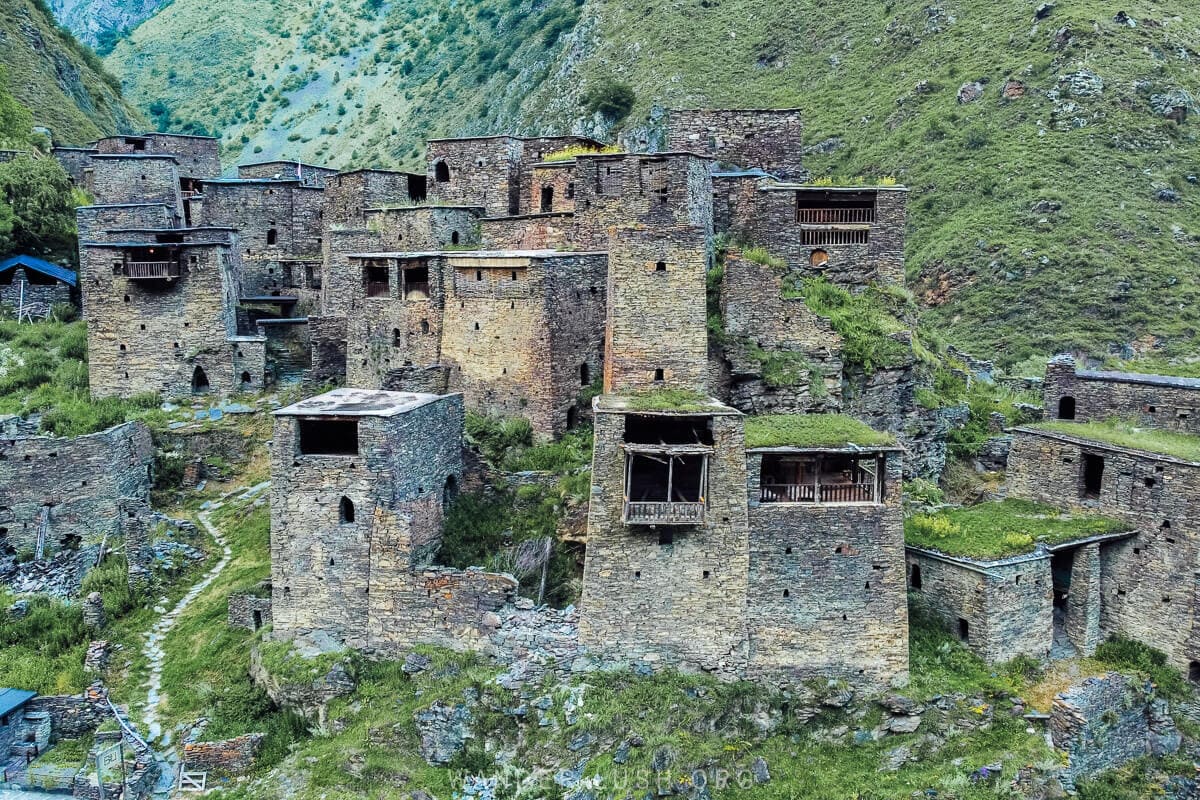
As Khevsureti’s main population centre and most developed village, every adventure along Georgia’s north-eastern frontier goes through Shatili. Whether you are on foot or travelling by car – and especially if you brave the ride up from Tbilisi by marshrutka – Shatili is a great place to spend a night or two while you explore the area.
This Shatili Travel Guide covers all the basics, from transportation and accommodation to the best things to do inside and outside the fortress.
Please note: This post contains affiliate links, meaning I may earn a commission if you make a purchase by clicking a link (at no extra cost to you). Learn more.
What & where is Shatili?
Located deep in the Greater Caucasus, around 150 kilometres north-east of Tbilisi, Shatili is the main village in Pirakita (‘hither’) Khevsureti, the southern part of the historic highland region otherwise known as the ‘Land of Valleys’.
Shatili was built on the bank of the Arghuni River over a long period of time, between the 7th and 18th centuries. Along with nearby Mutso, it is an outstanding example of a village where the tower-dwellings are interconnected to form one single line of defence. In this respect, it differs vastly from Ushguli, for example.
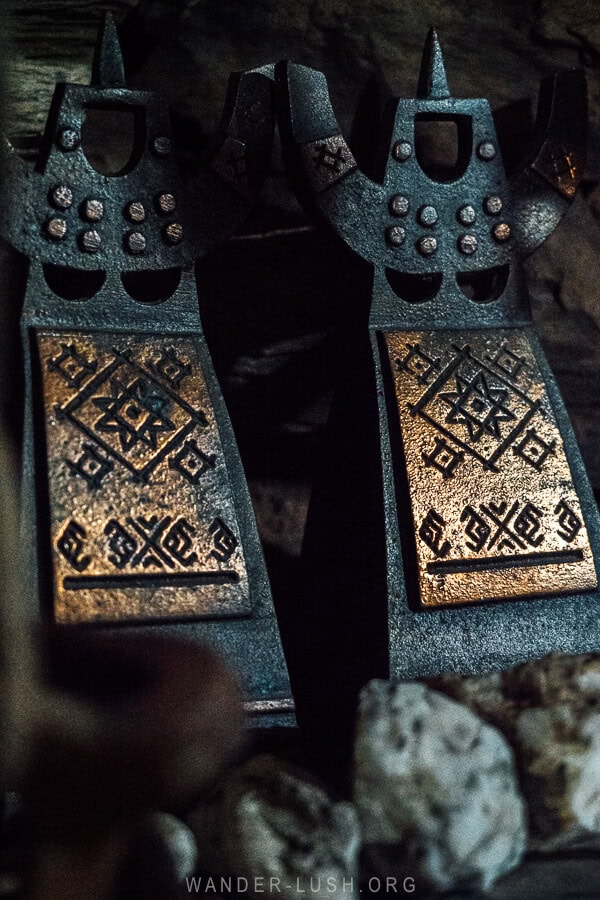
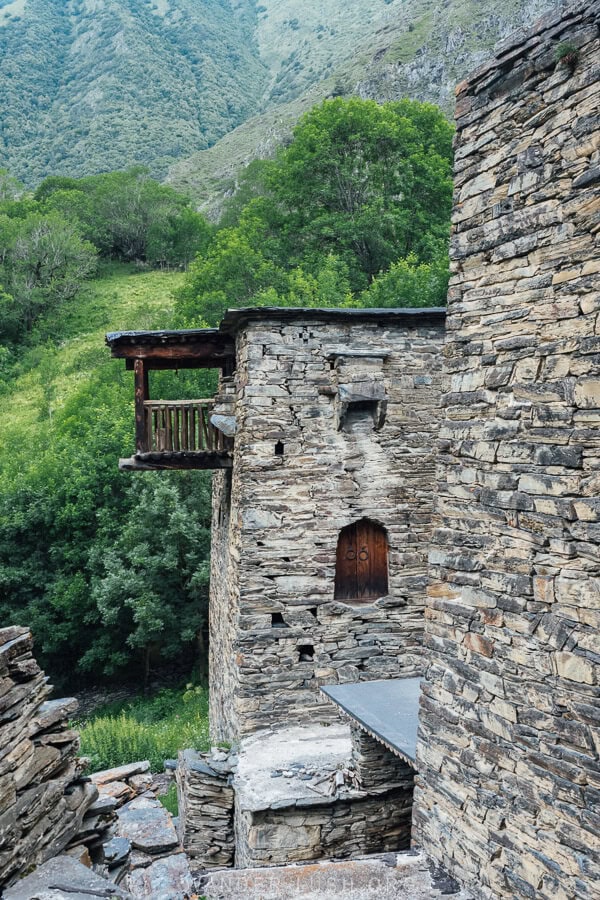
Khevsurs (people from Khevsureti) have been known throughout history for their bravery and courage in battle. They are muses for many a folktale, and many a poem – most notably the work of Vazha Pshavela.
Perhaps you have heard the stories of mountain men riding into Tbilisi in 1915 dressed in rusty chainmail, ready to lend their broadswords to the WWI effort. Well, they were the Khevsurs. And although the tale that they descended from Knights of the Crusade has been labelled a tall one, it speaks to the level of reverence people have for the Khevsurs, Georgia’s protectors along the all-important northern frontier.
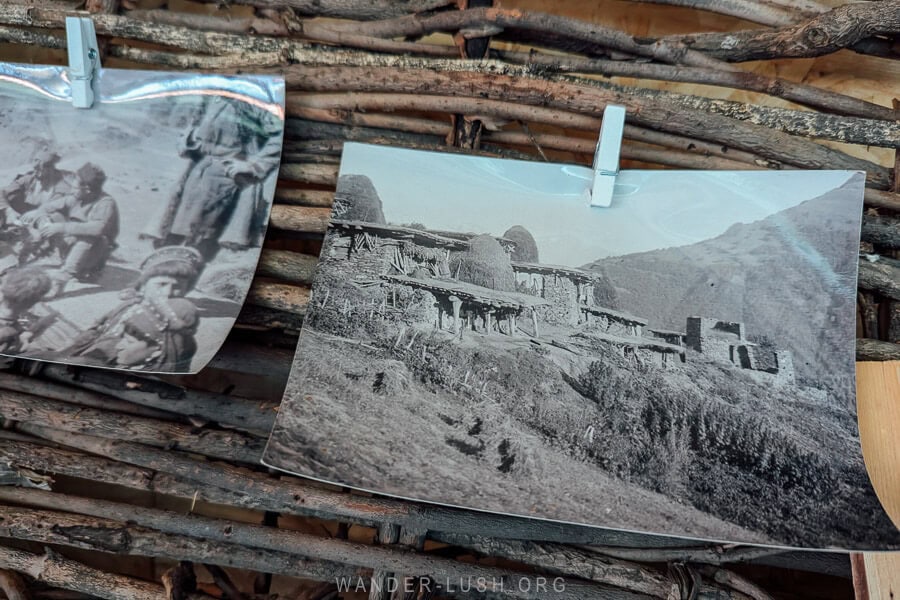
There are a dozen or so households in Shatili, but only a few families choose to stay year-round (most people depart in November to sit out winter in the lowlands). Most live in New Shatili, a second settlement, while a number of the 60-odd historic residential and defensive towers have been rehabilitated and repurposed by the successors of their original owners for tourism.
Shatili has been a Tentative UNESCO World Heritage Site since 2007.
Is Shatili safe?
Shatili’s close proximity to Russia (Khevsureti borders on the Republics of Ingushetia and Chechnya) should not be a cause for concern. I had no trepidation about visiting Khevsureti, and I have not read or heard anything that would make me think it is unsafe for tourists.
No permits or special permissions are required to visit Shatili, and you will not encounter any security checkpoints or border control stations – provided you stick to the well-trodden path, which I recommend you do. Khevsureti is certainly a hidden gem, but it is a popular destination for domestic tourism. On weekends especially you will see plenty of groups of Georgians visiting for the day.
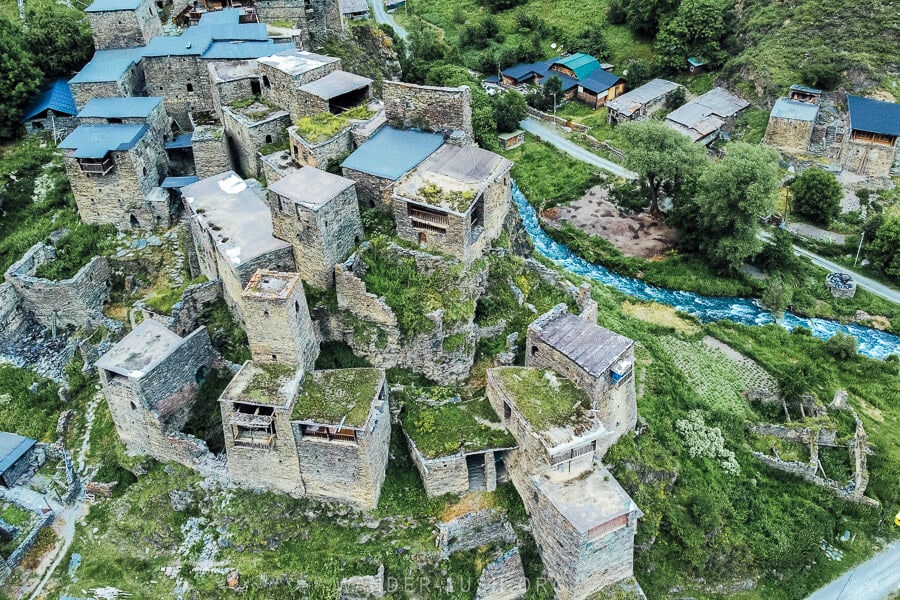
The biggest safety concern in Shatili is the roads. Since I moved to Georgia in 2020, there have been a couple of tragic accidents here involving tourists. Although the road is noticeably better than the Abano Pass in Tusheti, it should still be approached with caution – especially in poor weather. See my transportation tips below.
How to get to Shatili
It takes approximately 4 hours to reach Shatili from Tbilisi via the Datvisjvari (‘Bear’s Cross’) Pass. There are four ways to travel: Hire a private driver, hire a car and drive yourself, take the bi-weekly marshrutka van, or join a guided trip.
Road conditions vary from a beautiful new sealed road, to a gravel road that is narrow in places and has switchback-like bends. Additionally, this area is prone to flooding and landslips, so it is not recommended to travel in the days following heavy rain. Even in summer you will see areas where the road is falling away into the river.
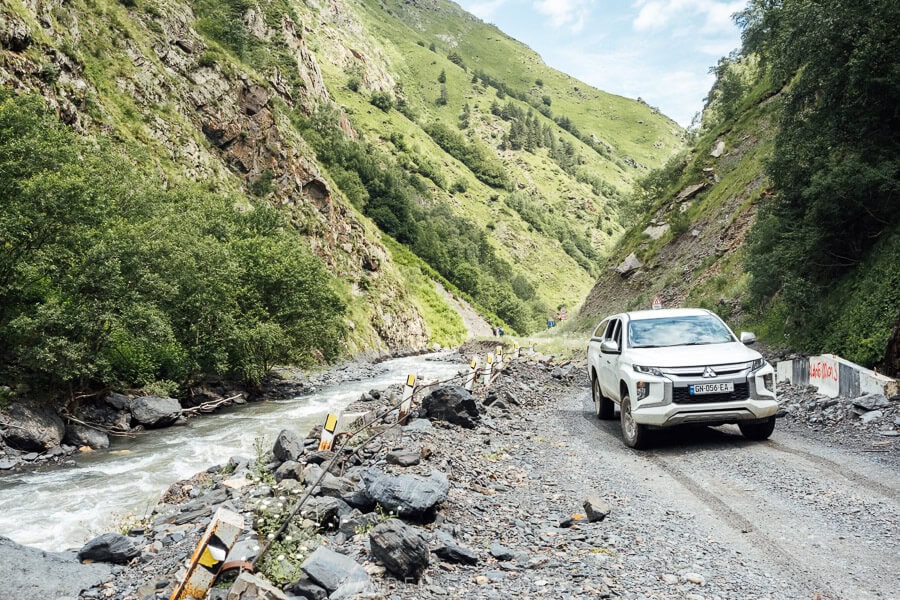
The safest and most efficient option is to hire a private driver to take you to Shatili and around to the different villages and landmarks in Khevsureti. An experienced driver who is familiar with the roads and has the right kind of vehicle is essential. If you need a recommendation, please get in touch via email and I will be happy to refer you to the driver we used for our trip.
If you decide to drive yourself to Shatili, you will need a 4WD with high undercarriage clearance. Most car rental companies prohibit you from driving this road, so you will need to check the fineprint. Offroad cars from Martyna z Gruzji can be taken up to Shatili – mention wanderlush when you book to receive 10% off.
It is essential to check road conditions before you set off – use the GeoRoad Facebook Page/hotline to learn of any closures, and if possible ask a local in Shatili (e.g. your guesthouse host) if there is anything you should be aware of.

There is a marshrutka van service between Tbilisi’s Didube Station and Shatili twice a week during the summer season (June through September). For full details, please refer to this guide: How to get to Shatili from Tbilisi (published soon).
I do not recommend visiting Shatili as a day trip from Tbilisi. The drive is too long, and the road too demanding, to get up and back safely in a day. Multi-day tours such as this one are a safer bet.
Best time to visit
The best (and only) time to visit Shatili and Khevsureti more broadly is during the summer months. The road is not maintained during winter, and the snow is too deep between November and May (approximately) to access the villages over the pass.
I recommend visiting Shatili between late June and mid-September. Our trip took place in the last week of June, and it was still a bit wet and stormy. July/August is generally the safest option for dry conditions.
You might want to time your visit to coincide with a local festival. The Mountain Days Festival is a new program that takes place across the country’s different highland regions. In 2024, it was held on the second weekend of July.
A second festival, Shatiloba or the ‘Day of Shatili’, takes place on the first or second weekend of September and includes horse racing and other traditional events. Find more details in my Georgia Cultural Calendar.
Because of the day tours, it is noticeably busier in Shatili on weekends. If it is important for you to experience the area with fewer people around, try to avoid visiting on a Saturday especially.
Things to do in Shatili
Given its compact size, Shatili can easily be covered in as little as a few hours. If you enjoy taking photos and want to explore the village thoroughly, then you will want to give yourself more time than that.
I recommend spending a full day in Shatili.
Stop for a photo at the viewpoint
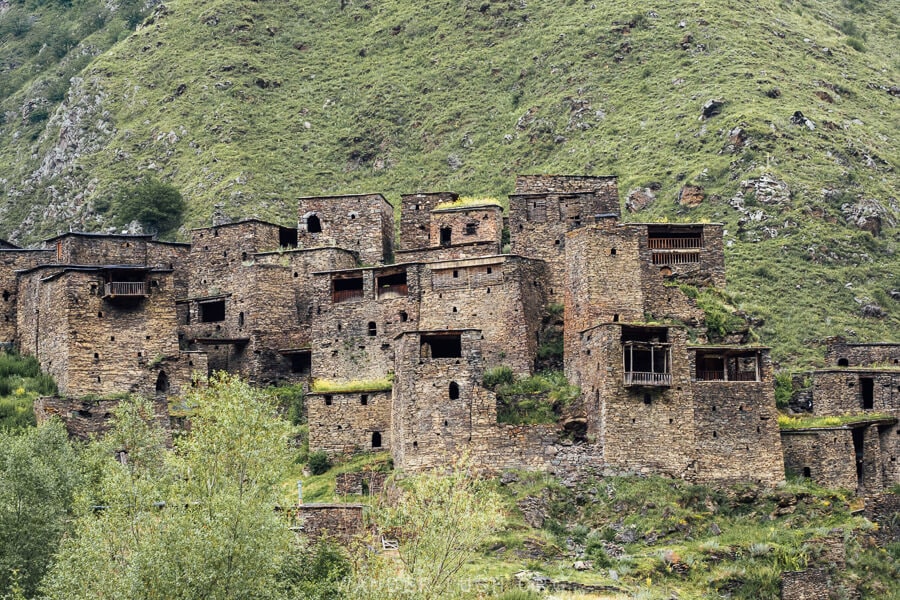
Shatili is located on the northern bank of the Arghuni River. Don’t believe Google Maps: the main road doesn’t loop around the bottom of the fortress, it passes along the opposite side of the river.
The bridge that previously linked the main road to the village had washed away when we visited this summer. There is another car bridge you can use to get across, but if you want a nice view of the full set of towers then it’s a good idea to overshoot the bridge and stop around this point first for a photo.
Seen front-on, each tower wears its own expression and has its own personality.
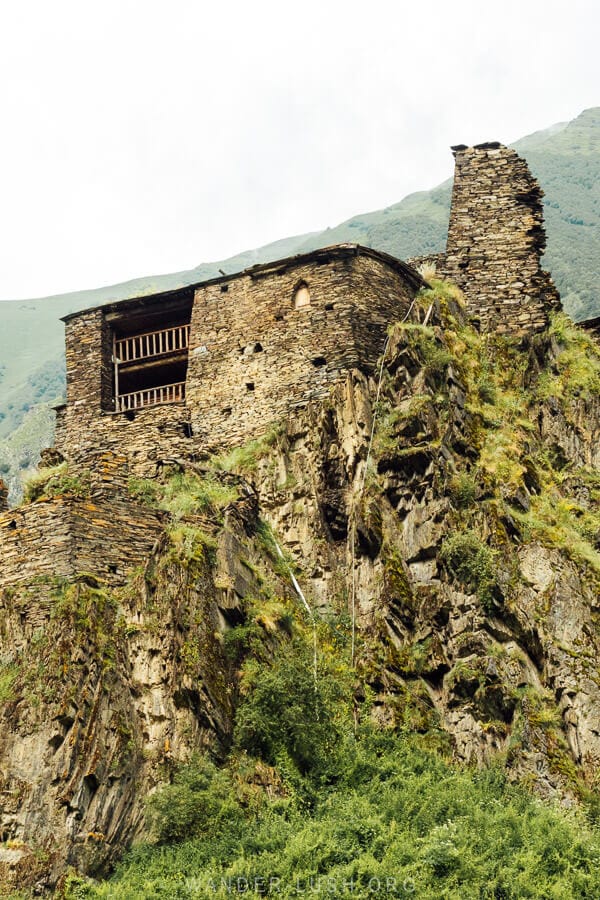
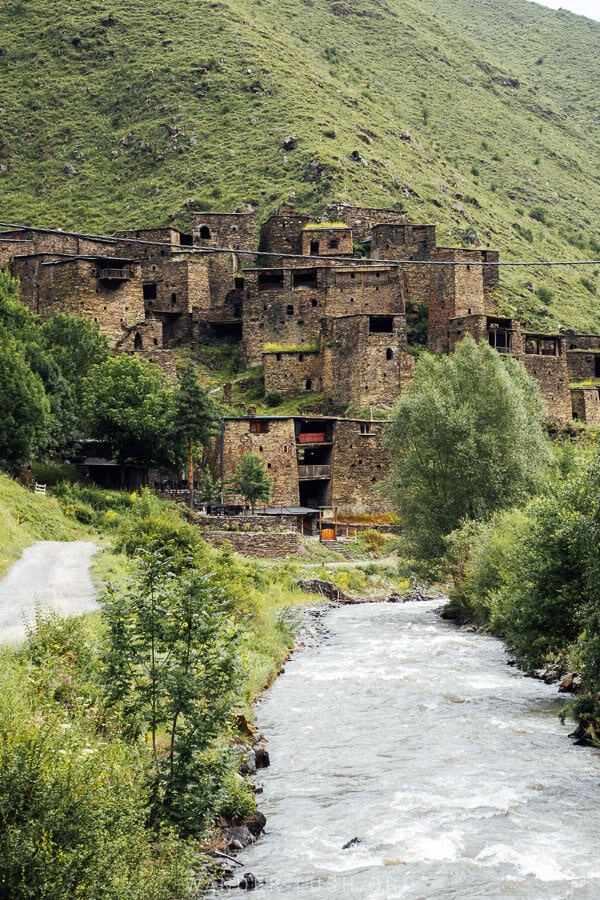
Another vantage point can be found halfway along the smaller pedestrian bridge under the car bridge. From here, you can capture the cluster of towers side-on with the river coursing past.
Search for pictograms & wooden bridges amongst the fortified towers
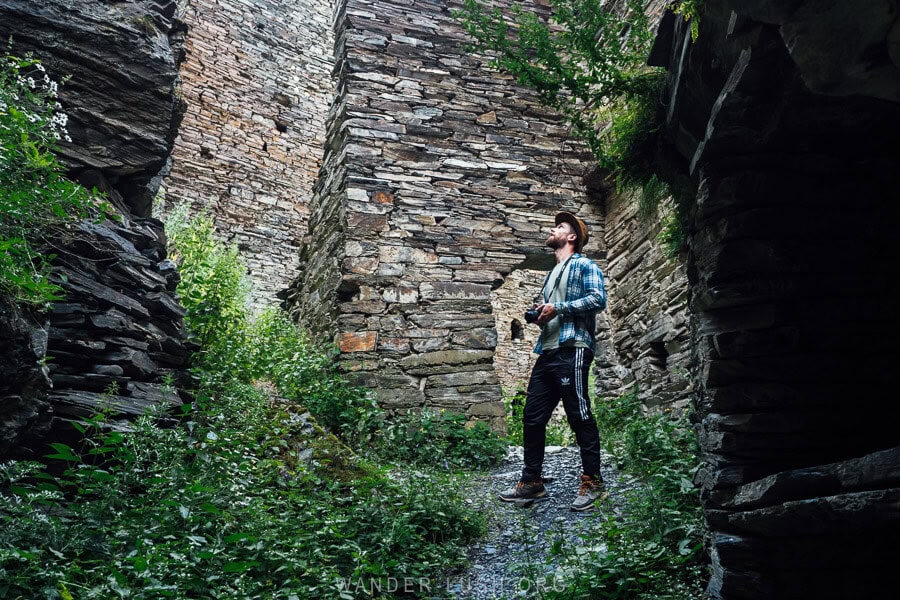
Leaving the road and climbing up and into the village, you immediately find yourself amidst a tangle of narrow passageways that veer left and right and up and down.
Shatili’s towers are arranged across a slope, and you gradually get higher and higher as you pick your way through the maze. With all the arches, bridges, terraces and twists and turns, it is very easy to get lost (in a good way!).
The majority of the 60 towers lie empty. Some are missing their doors, permitting you to venture into the darkness and see them from the inside out. Traditionally the tower-dwellings were divided into 2-4 storeys by floating platforms, with livestock kept below the family’s living quarters.
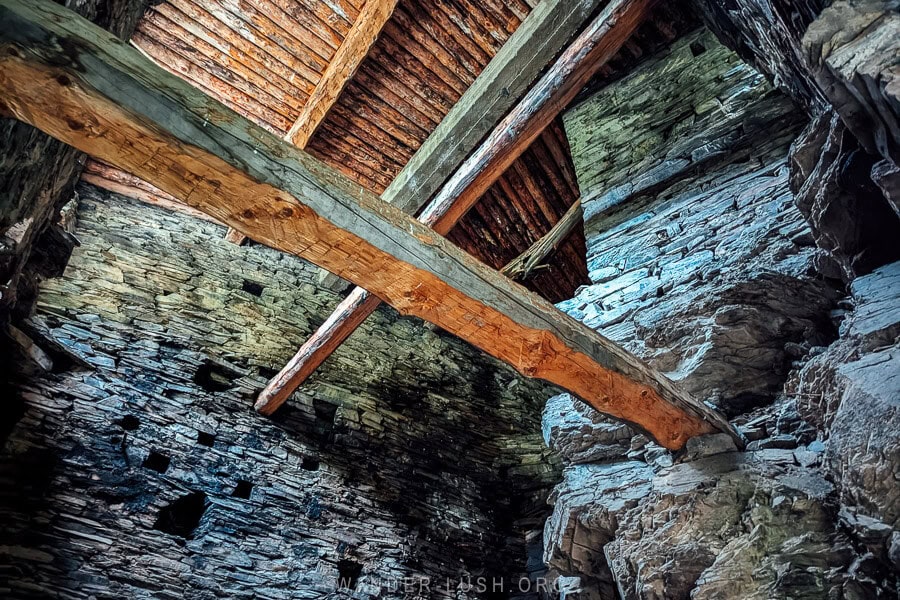
Newer towers (dated to the 17th-18th century) can be identified by the presence of wall embrasures created to accommodate guns. The older towers don’t have these.
You will also notice that some of the towers have cornerstones engraved with a family name and/or a date. One we saw had an inscription from 1930.
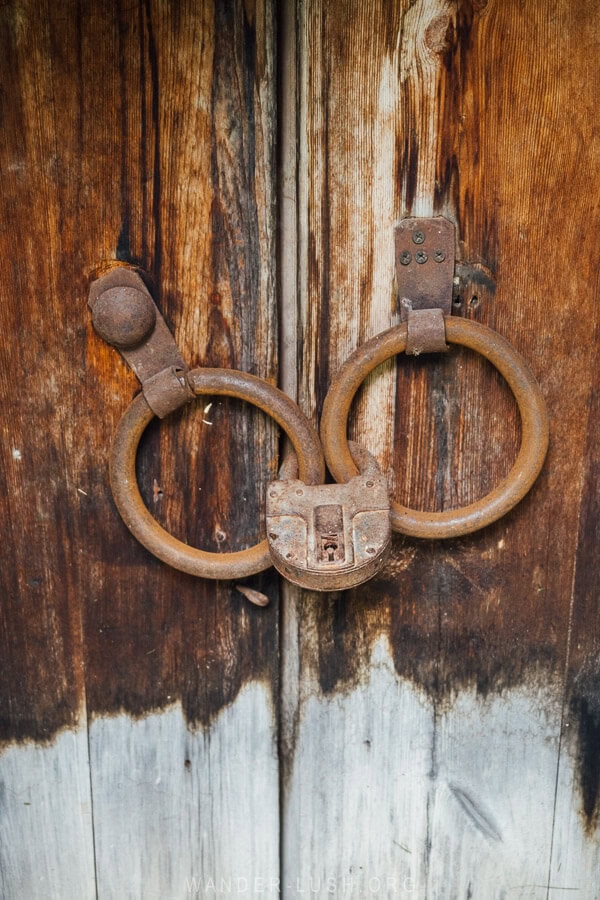
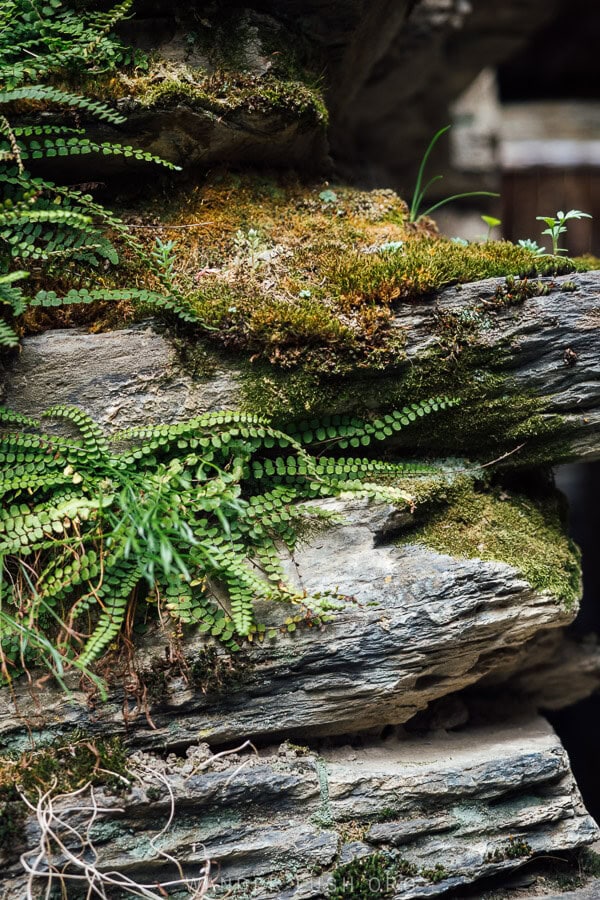
As you wander, there are two architectural features to keep a lookout for:
Pictograms are linked to Khevsurian mythology and the belief system that prevailed in the highlands until it was eventually incorporated with Orthodox traditions (Christianity is officially the main religion). Sacred symbols etched in stone above a tower-dwelling’s doorway or window were meant to protect the family within. Some reference the mythological protector of the Khevsur warriors, while others resemble astrological symbols.
We identified a couple pictograms in Shatili. One was located high on a window mantle, and we spotted the other one lower down on a door frame.
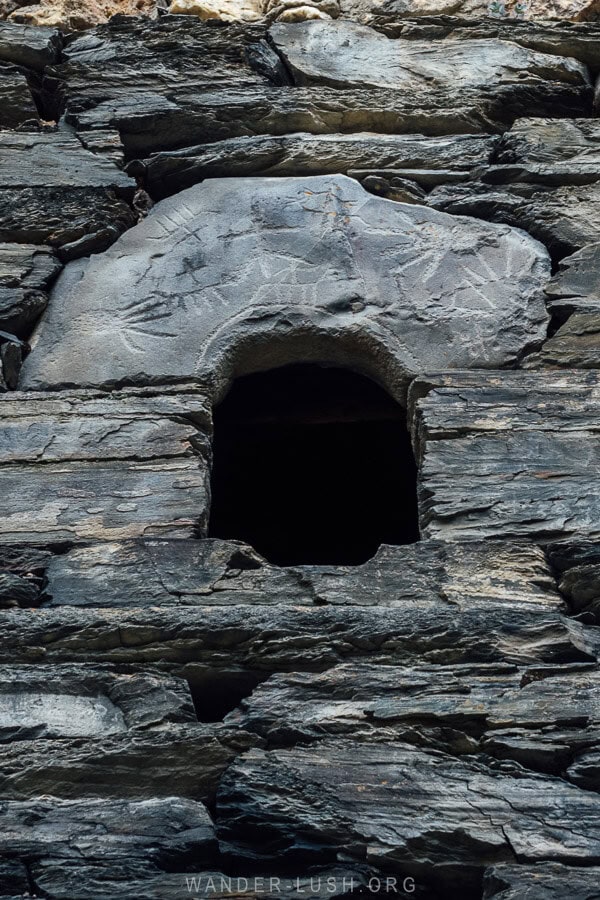
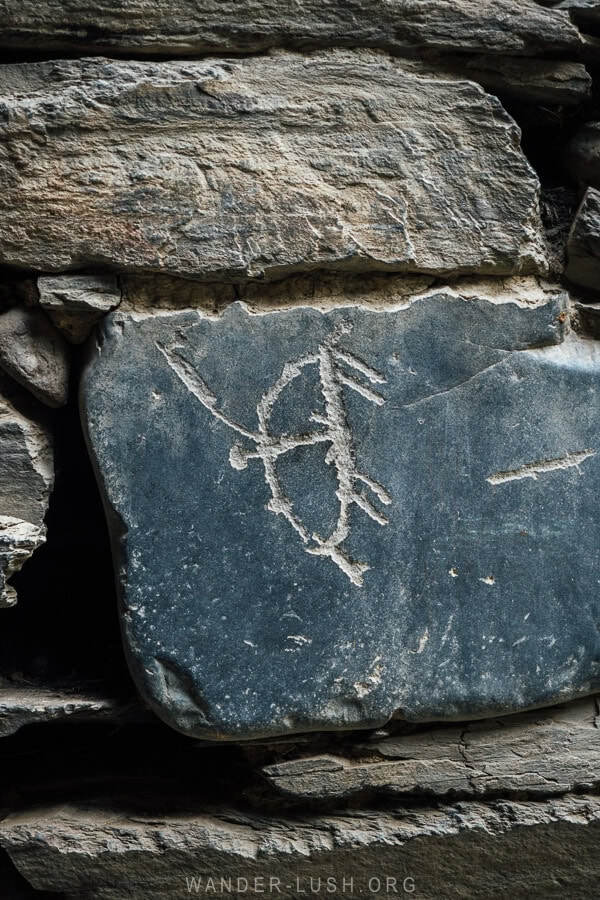
If you are familiar with the Khevsurian restaurant in Tbilisi called Pictograma, this is where the name comes from.
Also note the elevated log and stone bridges that connect each tower to its neighbour. This quirk of Shatili’s ‘city planning’ allowed residents to quickly move between the towers and get in and out of the village without having to go down to street level. If the enemy came knocking, you could escape more efficiently. I suppose this system also helped to confuse and disorient invaders.
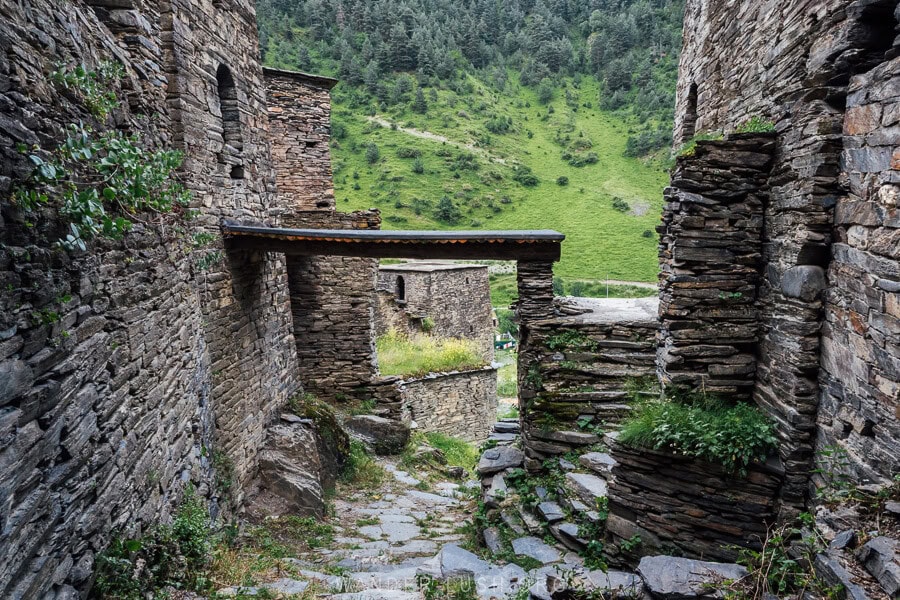
One of the most iconic Brutatlist buildings in Tbilisi, the Saburtalo Skybridge, has a very similar design. Pictured below right, it is a set of three concrete residential blocks sewn together with metal walkways that allow residents (and the general public) to access the upper part of Nutsubidze Plateau without having to walk up the hill.
Project architects Otar Kalandarishvili and Gizo Potskhishvili drew direct inspiration from Khevsureti’s vernacular architecture when designing the Skybridge in the 1970s, and even named the complex ‘Shatili’ as a homage.
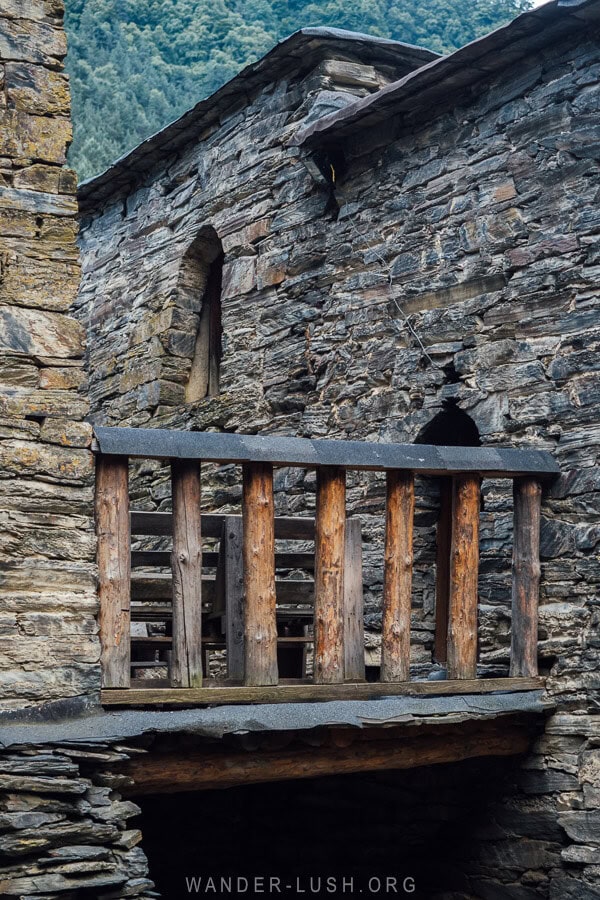
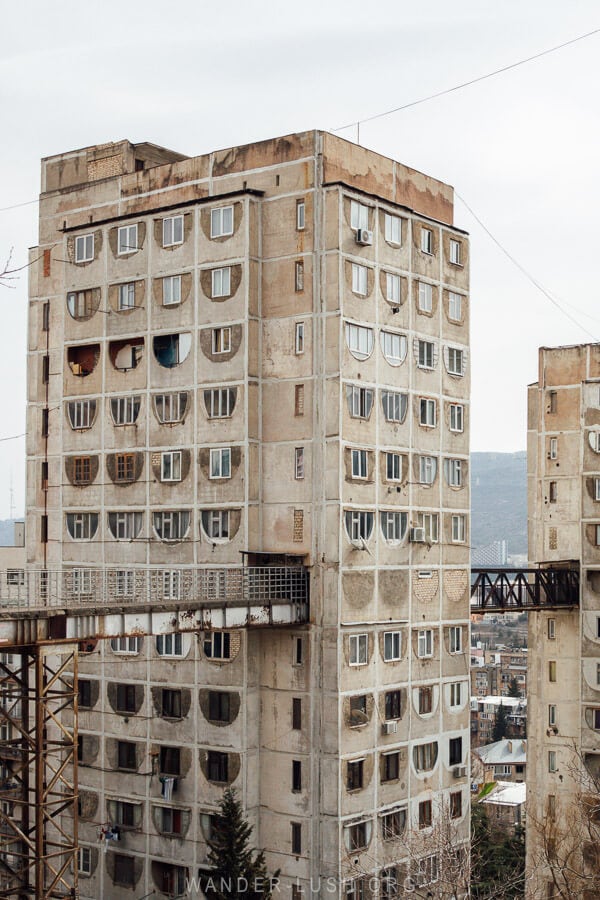
There are a handful of information boards dotted around Shatili that describe different facets of the village’s history and architecture.
Eat Khevsurian cuisine at Cafe Firefly
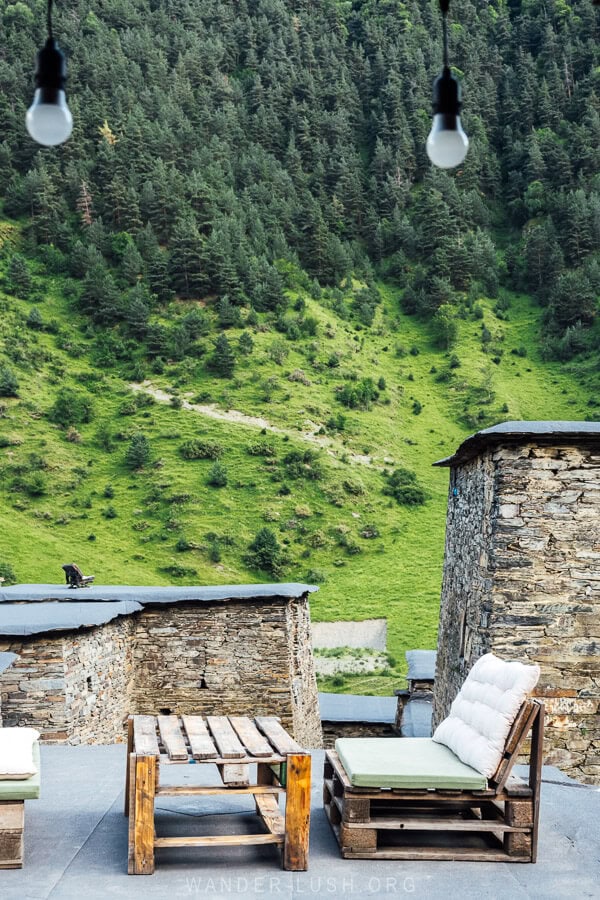

While you are out exploring the village, stop off for a drink or a meal at one of several venues nestled inside the towers. Cafe Firefly is located towards the back of the complex and has an excellent view of the rooftops from its terrace.
There are a range of food options here, but I highly recommend ordering the Kuserbo, a Khevsurian specialty dish that is almost like a soft potato hash loaded with cheese, cooked in ghee, and topped with spring onion.


Cafe Firefly doesn’t seem to have official working hours, but it should be open for lunch and dinner during the season. We found the kitchen open at 5.30pm on a Sunday. Check their Facebook Page for any updates. Card payment is accepted.
Find the Orthodox Church
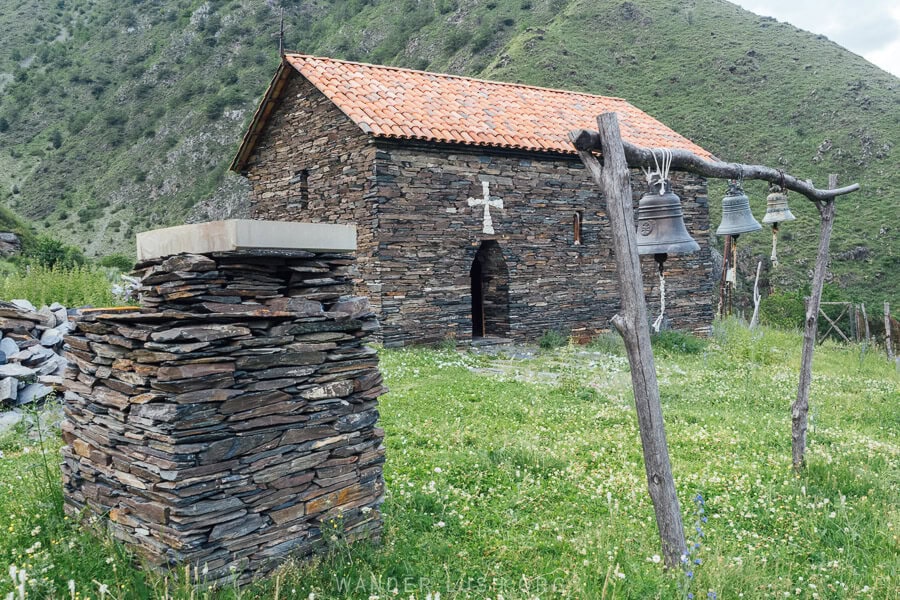
Shatili has a cascade configuration so that by the time you exit the village through the gate behind Cafe Firefly, you are quite high up in the hills.
Just beyond the last tower, you will spot a stone building on a grassy rise. The tiny Annunciation Church of Shatili is a relatively new Orthodox church constructed from local stone. What makes it interesting is the presence of (what appears to be) a Khati or Salotsavi shrine on the grounds, right by the trio of bells. I would love to know the full story – in my mind it illustrates the mingling of Orthodoxy and pre-Christian beliefs that occurs in Khevsureti and other mountainous areas.
On the territory opposite the church there is a cemetery and several more shrines concealed behind tall grass.
You will also notice that there is an access road – if you have limited mobility, it is possible to drive all the way around the back, through New Shatili, and enter the tower complex from this point, thereby avoiding the uphill walk.
Visit the Anatori Necropolis
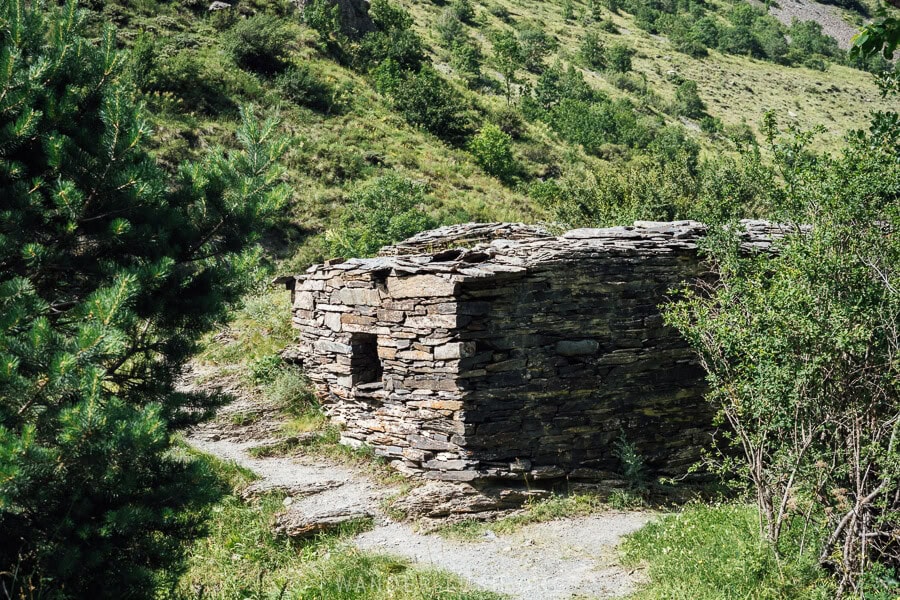
The Anatori Necropolis is located between Mutso and Shatili, so it makes sense to stop off on the way. It is a very small site so you only need around 20 minutes here.
The trio of concealed burial chambers is all that remains of Anatori, a once-prosperous village located on the opposite side of the valley. It was depopulated in the 18th century when the Great Plague or Zhami swept through the area, apparently claiming the entire community.
Initially the residents of Anatori built this ossuary to house their dead. But when they realised the severity of the contagion, they started nobly walking themselves to the necropolis where they would sit and wait for death to come. Only one resident – a young boy who was away working as a shepherd in Tusheti – survived to tell the tale.
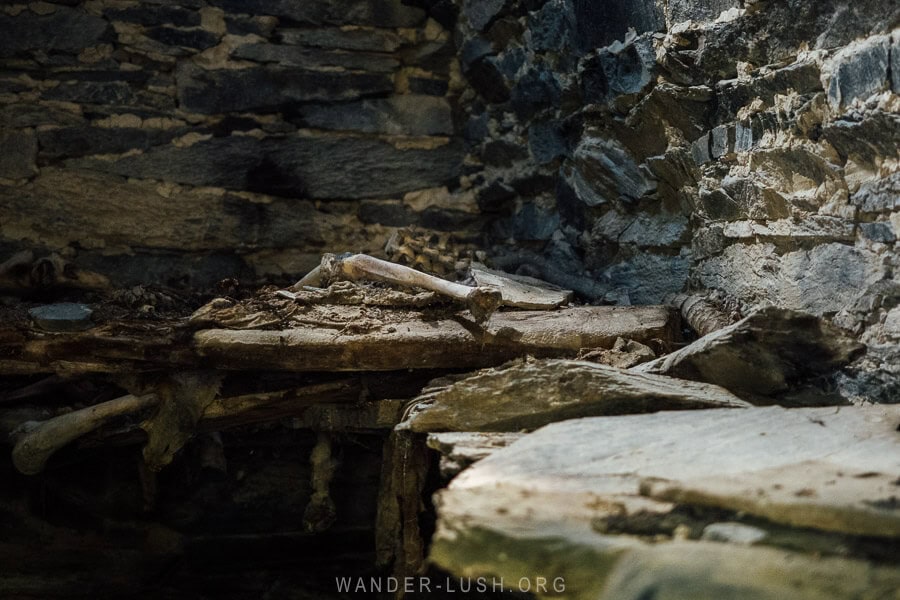
This story of self-sacrifice and self-imposed isolation in an effort to protect others is one of the most potent myths associated with Khevsureti.
The crypts themselves are three low stone buildings arranged over the valley edge. Peering into the darkness through the barred windows, you will see piles of human bones (no sculls like in Mutso, though) scattered on the floor and arranged over ledges. A flat piece of flat slate engraved with a cross, a shrine of sorts with votive candles and coins on it, sits on one of the sills.
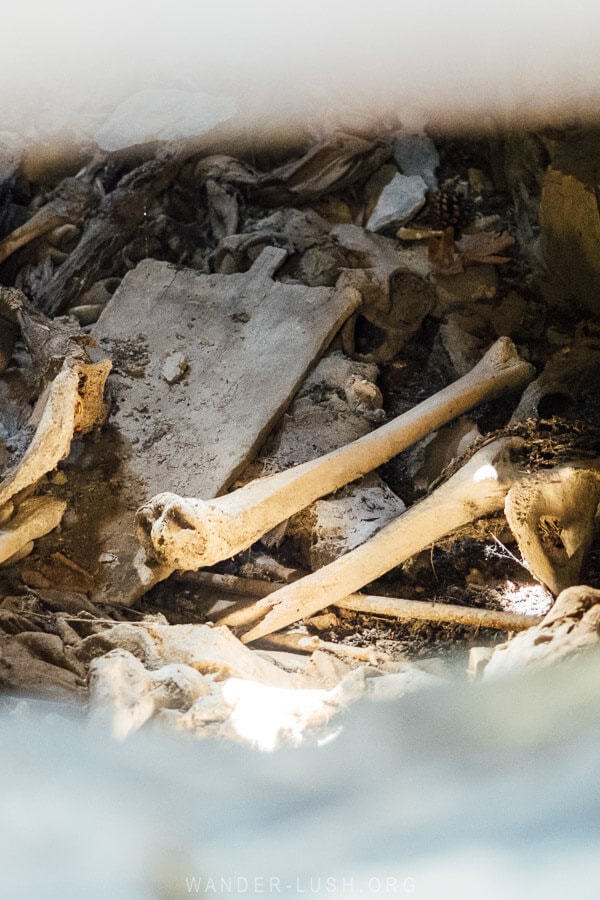
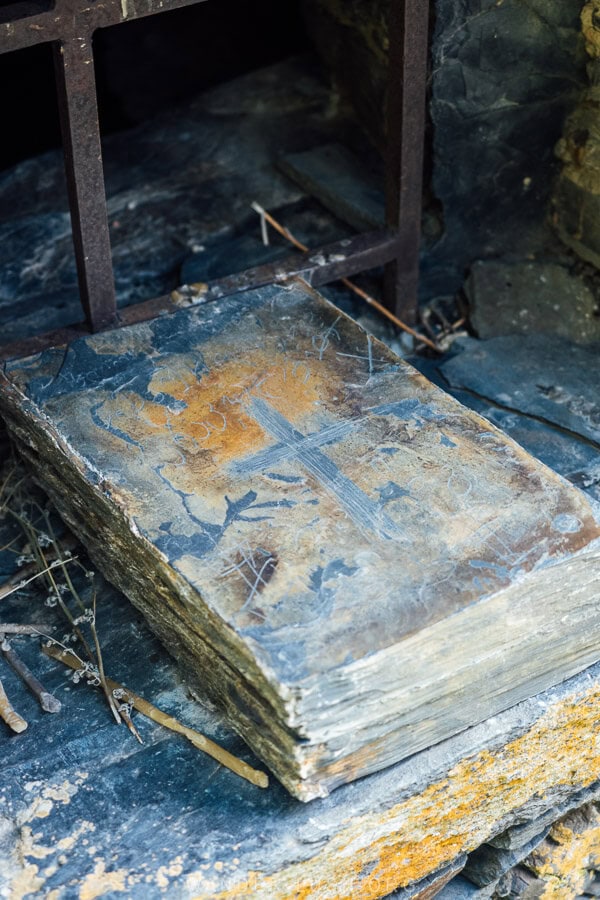
To add to the eeriness, Anatori is less than a kilometre from the Russian border. This is the closest I have been to Russia – it was pretty surreal to see the flag flapping in the wind in the distance.
There was a time when borders meant less and pilgrims from the North Caucasus would cross the pass and gather here to worship Anatorisjvari, the local deity who is believed to have set the Plague upon the village.
Take a side trip to Mutso
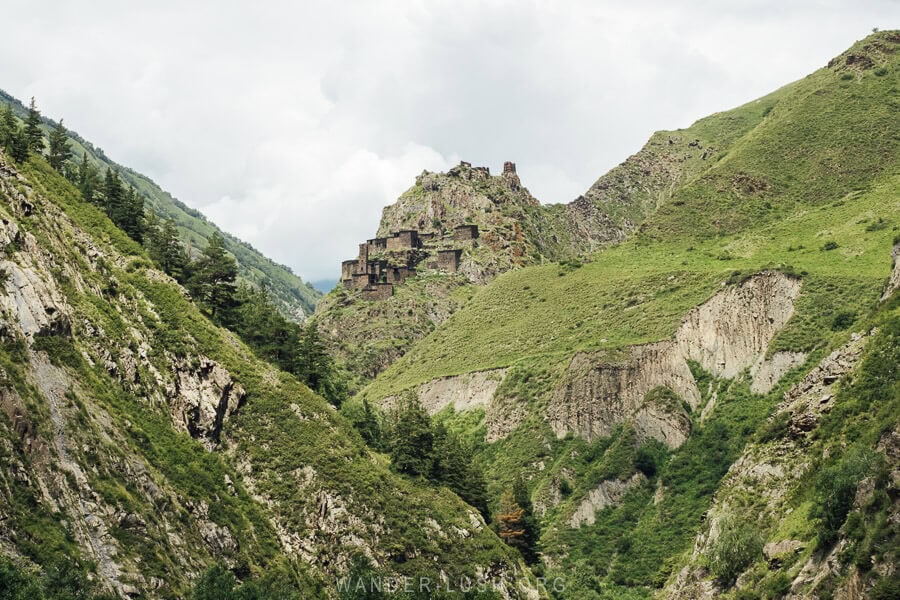
If you think Shatili’s towers are impressive, just wait until you see Mutso!
While I enjoyed both fortress-villages for different reasons, I do feel that Mutso (Mitsu) left a stronger impression on me. The location high above the river on a rocky outcrop is definitely more dramatic. You have to hike up into the towers, so just getting there feels like something of an accomplishment. It is completely empty and feels a bit more untouched. And the crypts you visit on the climb are even more eerie than those at Anatori.

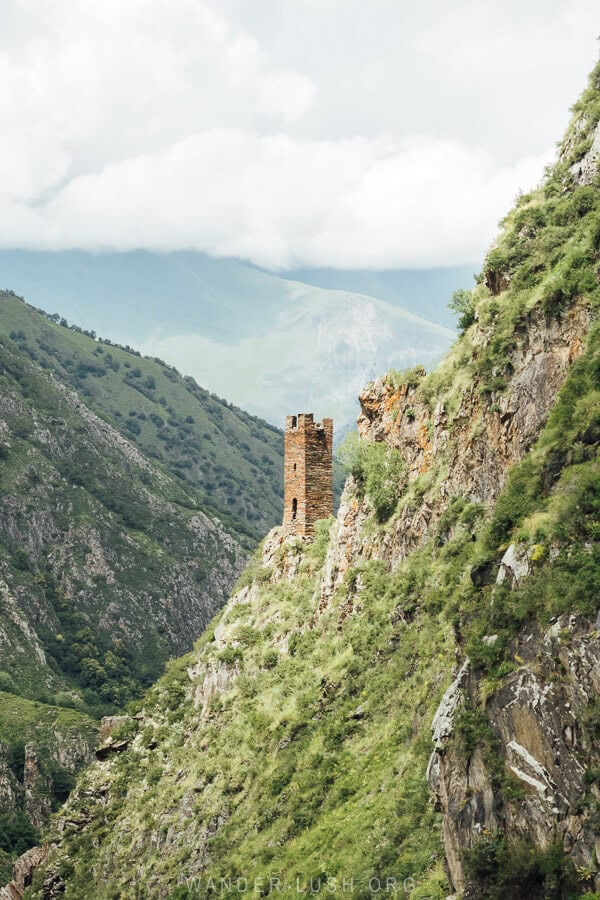
Rounding the hill enroute to the fortress and catching sight of the Torghva Tower peeking out over the valley above a mess of wildflowers is probably my most enduring memory of the trip. What a sight to behold!
Mutso is located 12 kilometres south-east of Shatili. It takes around 2 hours to climb to the highest point then scramble back down, so you can very easily visit as a side trip from Shatili. If you don’t have a car, you should be able to organise a lift through your guesthouse. Anatori is right enroute, so you can knock out both.
For more tips, see My Full Guide to Visiting Mutso.
Where to stay in Shatili
Top choice: Ethnic Hostel
Managed by the charming Irma and her family, Ethnic Hostel (less like a hostel and more like a guesthouse with a shared bathroom) is set inside a reconstructed tower-dwelling adjacent to the main village. We tossed up between this hotel and Front Castle, but decided on Ethnic in the end because of the view: from the rooftop terrace you can see all of Shatili, rather than being inside the village with not much of a view. Not to mention that prices at Front Castle were almost double.
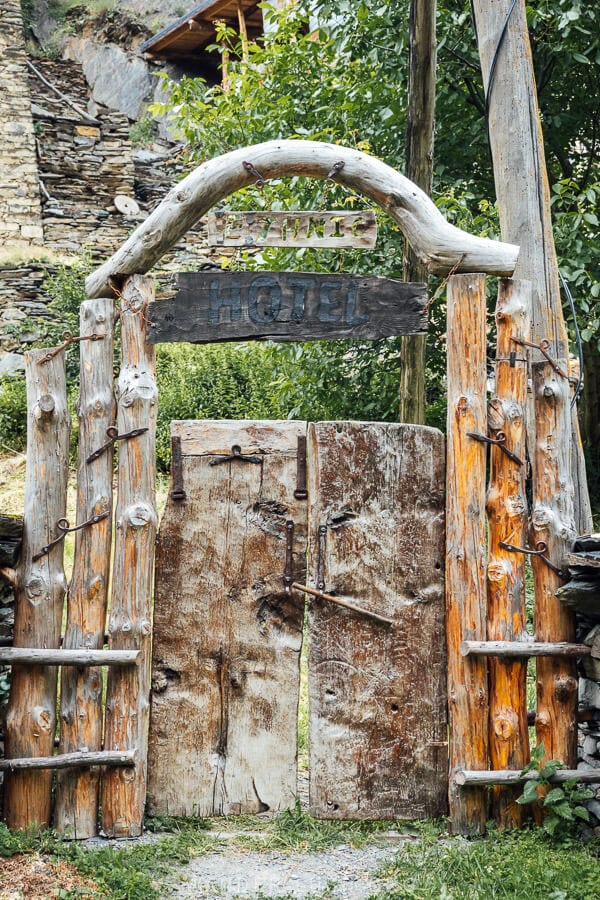
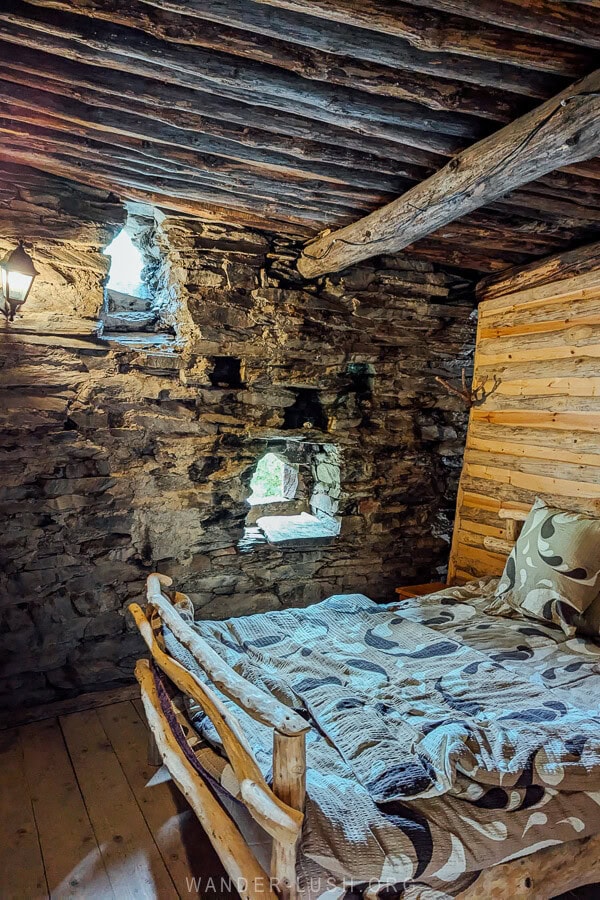
We booked all three rooms – the double, twin and a room with a bunk that sleeps three. The tree-trunk bed frames and all the rest of the furniture was handmade by Irma’s husband. Rooms are very quiet, clean and comfortable, and the breakfast is great.
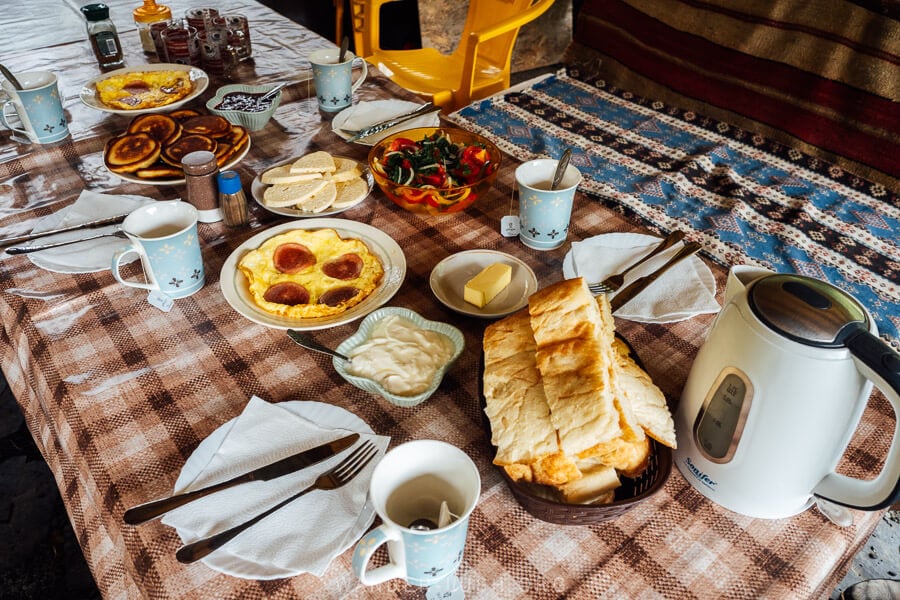
Sulphoni
We didn’t stay at Sulphoni, but we did eat dinner here. The owners couldn’t be sweeter. Drop by in the afternoon and they will tell you what’s on the menu for that evening (we had fried potatoes, salad, and one of the best khachapuris of my life).
The single-storey stone house is on the opposite side of the river and a bit further to walk to from the village, but the front-on view of Shatili from the little garden terrace is splendid.
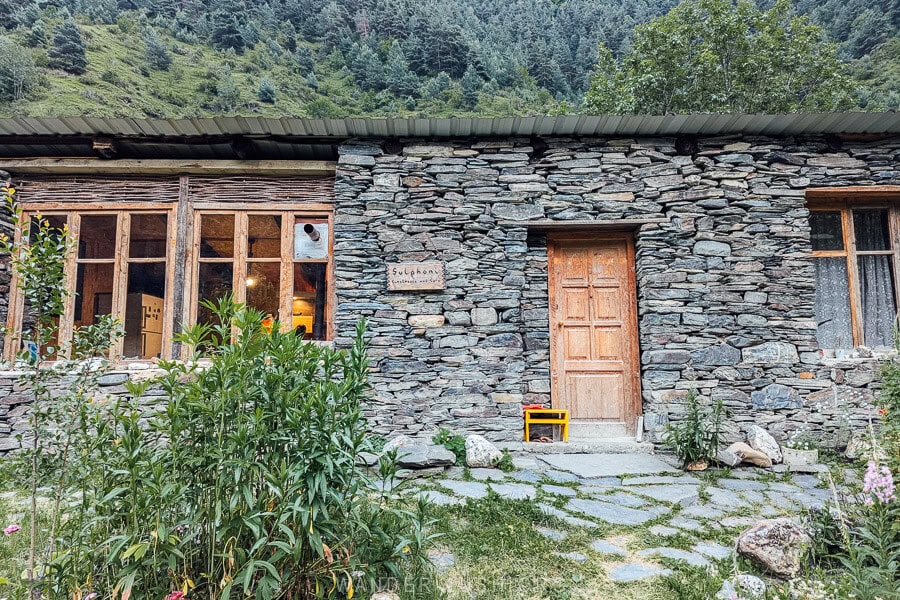
Shatili travel tips
- One full day is all you need to explore Shatili and visit the nearby Anatori Crypts. All in all I recommend spending three days in Khevsureti.
- Shatili and Khevsureti are physically demanding destinations that require a fair amount of walking over rough terrain. Pack your good walking shoes and hiking poles if you have them.
- There are large parts of Khevsureti where you cannot get a phone signal, including on the road. You will not always be able to get online or make calls. Magti does work in Shatili (but not on the road outside the village). All guesthouses have WIFI, but it is of varying quality.
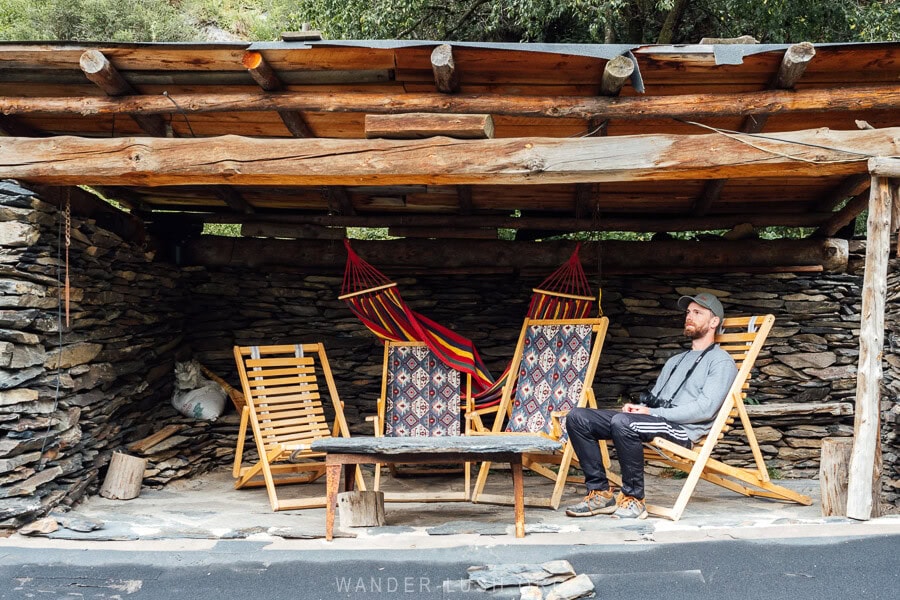
- While larger businesses might accept card payment, cash is king in Khevsureti. You will need to bring enough Georgian lari with you to cover your accommodation and food costs.
- There are no ATMs in Khevsureti. The closest cash point is in Zhinvali.
- Food options in Shatili are somewhat limited (aside from the few cafes inside the village). I recommend eating other meals (especially breakfast) at your guesthouse.
- There are no shops or pharmacies in the area.
- Shatili has hydro power, so your guesthouse will have hot water and working charge points.


